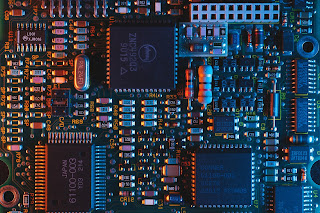1. In direct memory access mode, the data transfer takes place
a) directly
b) indirectly
c) directly and indirectly
d) none of the mentioned
Answer: a
2. In 8257 (DMA), each of the four channels has
a) a pair of two 8-bit registers
b) a pair of two 16-bit registers
c) one 16-bit register
d) one 8-bit register
Answer: b
3. The common register(s) for all the four channels of 8257 is
a) DMA address register
b) Terminal count register
c) Mode set register and status register
d) None of the mentioned
Answer: c
4.The pin that requests the access of the system bus is
a) HLDA
b) HRQ
c) ADSTB
d) None of the mentioned
Answer: b
5.The pin that strobes the higher byte of the memory address, generated by the DMA controller into the latches is
a) AEN
b) ADSTB
c) TC
d) None of the mentioned
Answer: b
6.The 8257 is able to accomplish the operation of
a) verifying DMA operation
b) write operation
c) read operation
d) all of the mentioned
Answer: d
7.The bus is available when the DMA controller receives the signal
a) HRQ
b) HLDA
c) DACK
d) All of the mentioned
Answer: b
8.To indicate the I/O device that its request for the DMA transfer has been honored by the CPU, the DMA controller pulls
a) HLDA signal
b) HRQ signal
c) DACK (active low)
d) DACK (active high)
Answer: c
9.If more than one channel requests service simultaneously, the transfer will occur as
a) multi transfer
b) simultaneous transfer
c) burst transfer
d) none of the mentioned
Answer: c
10.The continuous transfer may be interrupted by an external device by pulling down the signal
a) HRQ
b) DACK (active low)
c) DACK (active high)
d) HLDA
Answer: d

